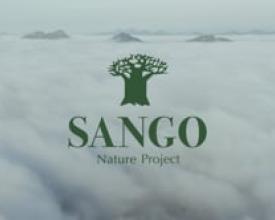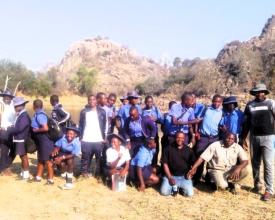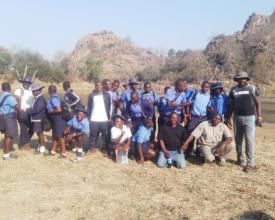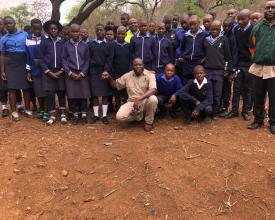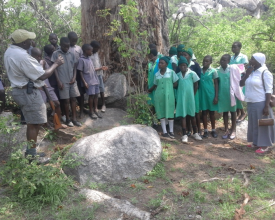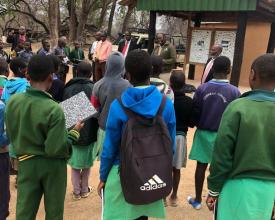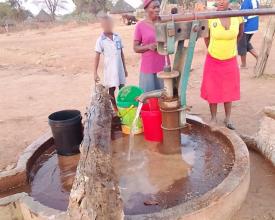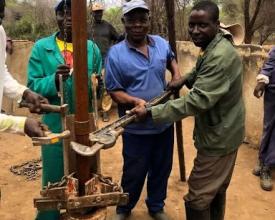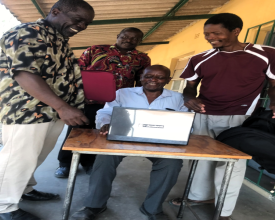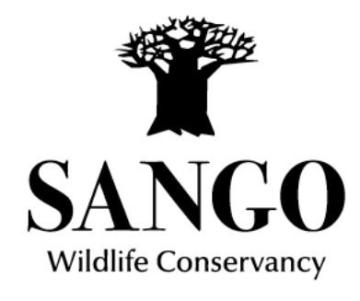
Strengthening Conservation Education and School Support in Bikita District, Zimbabwe
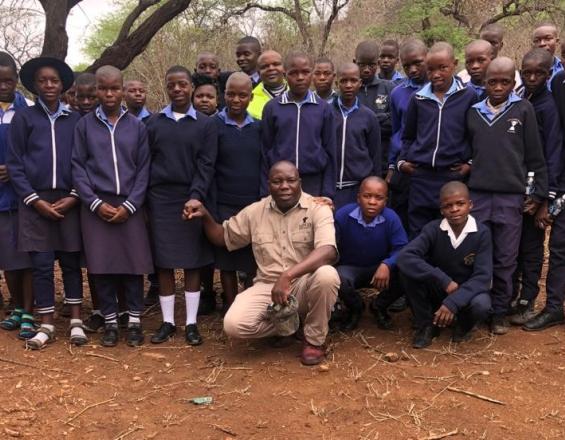
In rural Zimbabwe, poverty, limited infrastructure, and scarce educational opportunities restrict children’s ability to learn and to engage with wider environmental issues. Despite living in close proximity to rich biodiversity, many students grow up with little awareness of conservation, and schooling is further hampered by inadequate facilities and resources. To address this, Sango Wildlife Conservancy (SWC) developed a programme that combines conservation on-site education with direct support to schools and communities. The solution strengthens awareness of nature and sustainability among young learners while simultaneously improving learning conditions and community well-being through practical interventions such as infrastructure, clean water and food security. The primary beneficiaries of this initiative are approximately 2,000 schoolchildren and their teachers from 10 different schools. More broadly, around 15,000 community members in Bikita District also benefit through improved access to essential resources.
Context
Challenges addressed
- Social - Poverty and limited livelihood opportunities
- Social - Limited access to quality education
- Social - Inadequate school infrastructure and resources
- Social - Limited access to clean water and health infrastructure
- Ecological - Human-wildlife conflict and poaching pressures
Education levels reflect both progress and challenges: although most of children of school-going age have attended school at some point and literacy rates in the province reach 91.5%, only 3/4 of children are currently enrolled, and attendance drops sharply after primary school. Interest in natural sciences is particularly low, with only 2% students in upper secondary and tertiary education choosing this field. The figures illustrate a community facing multiple barriers: limited access to basic services, early exposure to human–wildlife conflict and bushmeat poaching as normalized activities, and restricted opportunities to pursue higher education. Children have little chance to learn about nature, climate change, or the value of the wildlife economy.
Location
Process
Summary of the process
Recognising that long-term conservation success depends on community participation, SWC began by engaging local schools in 2012. In collaboration with principals from nearby primary schools, SWC launched a day-trip programme to the conservancy, allowing children to see wildlife in its natural habitat. The early visits revealed both the limited knowledge students had of wild animals and the poor state of many school facilities. Over time, the programme evolved to combine environmental education with practical support to schools and communities, improving not only conservation awareness but also children’s ability to learn in a healthy and supportive environment.
Building Blocks
Conservation Education through active participation
From 2012 onward, SWC has invited primary and secondary students to participate in annual day trips to the conservancy. Children were able to observe critically endangered species such as the black rhino while engaging in interactive discussions such as climate change, deforestation, pollution, wildlife protection, and community stewardship. Educational posters on mammals, birds of prey, amphibians, and snakes were also distributed to schools to reinforce classroom knowledge. The programme began with four schools (Chedutu, Chinyika, Maronga and Uteke primary schools) and expanded to ten by 2024, reaching 381 children and 41 teachers in that year alone. In total, an estimated 2,000 boys and girls have participated in the programme to date.
Enabling factors
The success of this building block was made possible by the long-term presence and credibility of SWC in the region, the openness of school principals to partner in conservation education, and the logistical ability to host groups of students within the conservancy.
Lesson learned
Exposing children to nature at a young age fosters a lifelong appreciation for conservation and creates an entry point for future careers in environmental stewardship. Linking classroom knowledge with real-world experiences makes abstract concepts—like climate change or the biodiversity crisis—more tangible. It also nurtures a sense of pride and emotional connection to local ecosystems.
Conservation education through facility support
Alongside education, SWC has, with help from its partners, consistently supported schools and communities with essential infrastructure. Between 2012 and 2013, four primary schools were repaired and furnished. In 2024 alone, further interventions included installing four 5,000-litre water tanks and a solar-powered pump at Mafaune Primary School, directly benefiting more than 500 pupils, 14 staff members, and 1,800 community members. Borehole maintenance across several schools and villages (20 interventions in 2024) provided reliable access to clean water, improving health and school attendance. Additional support included fencing school yards, donating books and stationery, providing a laptop to Uteke Primary School, and grading roads and soccer fields to improve both access to schools, health infrastructures and recreational activities. Nutrition is also supported through donations of sustainably harvested meat and the creation of community vegetable gardens, from which surplus produce was purchased to generate income for local households.
Enabling factors
These interventions were made possible through SWC’s established partnerships with schools and communities, as well as funding and technical support from external partners. The willingness of local communities to collaborate on school gardens, road maintenance, and borehole repairs was critical to sustaining the improvements.
Lesson learned
Improved school facilities have a direct effect on children’s well-being and attendance. When schools provide clean water, safe structures, and recreational opportunities, children are more likely to succeed academically. Tangible benefits such as improved health and nutrition also foster stronger community trust in conservation organisations. The facility support demonstrated that conservation efforts are most effective when communities experience direct, everyday improvements in their quality of life.
Impacts
Since 2012, approximately 2,000 boys and girls have participated in conservation education activities, gaining direct exposure to wildlife and a deeper understanding of environmental issues. The programme not only raises awareness of the value of biodiversity and encourages interest in careers in conservation and environmental stewardship, but also fosters pride and a sense of attachment to protecting local ecosystems. Improved schooling infrastructure and educational material create a more functional learning environment, fostering school attendance. At the community level, access to safe water through boreholes, nutritious food through the vegetable gardens and meat donations also increases school attendance and well-being, while reducing reliance on harmful practices like poaching.
Beneficiaries
Approximately 2,000 schoolchildren and their teachers from 10 different schools, who gain access to conservation education and improved learning conditions. Broadly, est. 15,000 community members in Bikita District benefit through improved access to resources.

